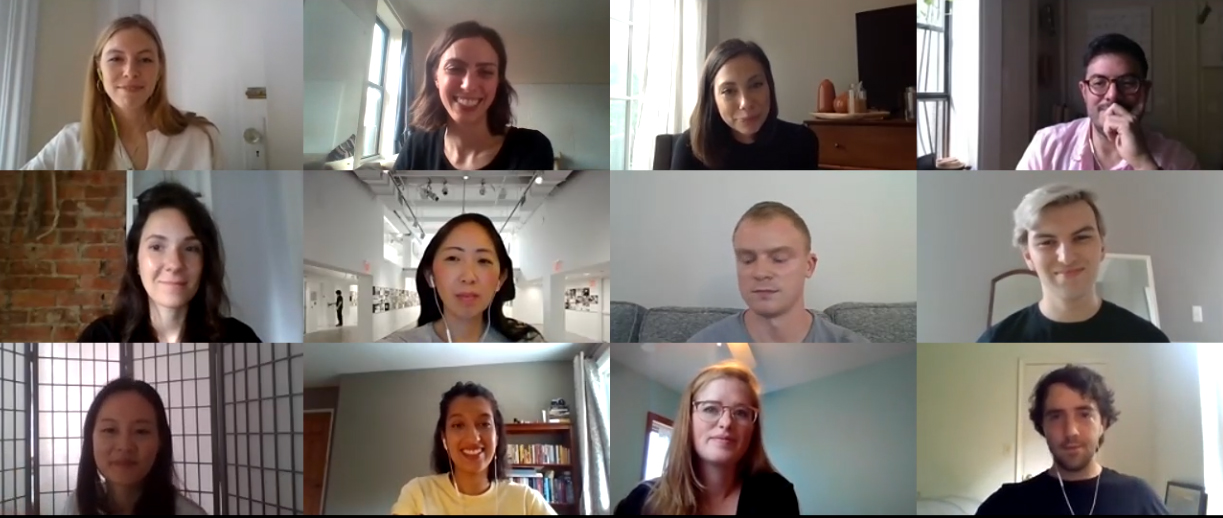by: Charlotte Laffler and Stephanie Jones
“I think for all of us—whether you’re on the design side, whether you’re on the public side or the private side—I would suggest that participation is becoming really critical. Not only for how we plan cities, but how we design them. It’s really clear that shopping corridors are becoming a central component of urban life. I think today, particularly in the context of COVID, streets are becoming destinations.”
– Dr. Jill Gross, Hunter College Department of Policy and Planning
As New Yorkers, we spend a significant portion of our daily lives navigating the streets, immersed in a landscape of buildings and activity. While the health of a city is often measured by its transit systems, parks, schools, and housing, the vibrancy of a city is determined by its streets and its storefronts.
For years we have read news coverage of weakening commercial corridors, and we’ve experienced firsthand the effects of retail vacancies and the monotony of retail chains. The absence of meaningful ground-floor tenants leaves our streets feeling unengaging and vulnerable, whereas the presence of thriving businesses and services that resonate with the neighborhood creates a sense of place, security, and community.
Neighborhood character is built up over time and new development can take years. As design professionals, we are usually brought into these conversations for a relatively short window, and often after the program has already been determined. In NYC, where the profit is often prioritized over the needs of communities, how can we ensure that the ground floor reflects those it is meant to serve?
AIANY Civic Leaders Charlotte Laffler and Stephanie Jones conducted the second of five Development Sessions, titled “Storefronts as Civic Life: Examining How Ground Floor Retail Spaces Impact Community.” They challenged the group to rethink the concept of ground floor commercial space as ground floor community space, leading with the provocation that a vibrant ground floor space is a public good that can add value to cities or neighborhoods. Empty storefronts or storefronts that don’t reflect the values of a neighborhood, on the other hand, can have a negative impact on residents. Even if a space is never entered, its mere existence impacts the local environment, both positively and negatively.
Given that the ground floor has a profound impact on the value, experience, and culture of a neighborhood, Laffler and Jones challenged the group to think of other uses for ground floors. The group explored how community-based organizations, nonprofits, and government services can be made more accessible, as well as models and frameworks that support small businesses and entrepreneurs to operate out of ground floor spaces despite a host of challenges.
The day began with an overview of forces that shape street-level commercial spaces. Laffler and Jones presented on factors that lead to storefront vacancy and displacement, and discussed some of the city services and legislation that provide support to small businesses and promote equitable economic development. For a deeper look at retail market analysis, the leasing process, and tenant attraction, and relevant zoning regulations, the CLP cohort heard from Nur Asri, a Senior Research Strategist at Streetsense. This was followed by case study presentations of projects and approaches that use alternate models of leasing across a spectrum of commercial uses. Laura O’Reilly, Founder and CEO of Wallplay, discussed their project OnCanal, as well as the Ground Floor Pop-Up Toolkit created in collaboration with Sidewalk Labs.
To learn more about how community boards, business improvement districts, city agencies, and nonprofits influence ground floor tenanting, CLP heard from a team of panelists during the second portion of the day. Participants included:
- Kojo Ampaw, former Chairperson, Community Board 17
- Christina Chavez, Executive Director, FAB Fulton
- Deshaun Mars, Director of Business Outreach, NYC Department of Small Business Services
- Yin Kong, Co-Founder and Director, Think!Chinatown
- Sade Swift, Communications and Event Coordinator, Green Worker Cooperatives
The panel discussed the roles and limitations of various city agencies, economic development organizations, and community groups in supporting small businesses and the general retail ecosystem. Conversation revolved around the impact of power, inclusion, and representation within communities and from outside actors.
The final presenter of the day, Jill Gross, Hunter College Department of Policy and Planning, spoke with the cohort about citizen capacities for participation and advocacy and the power afforded to designers in improving the landscape of our city. She encouraged CLP members to empower communities by involving them in conversations before projects begin and leaving them with a capacity to carry on after the team has left. Her presentation set the table for CLP discussions about the roles and responsibilities we share—as citizens and designers—to encourage programming of street-level commercial spaces that better serve the public.








